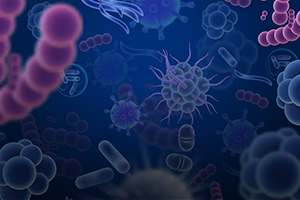Oil-Eating Bacteria

Since it was first surveyed in 1875, the Mariana Trench has been a subject of interest to scientists around the globe. At nearly 7 miles (11 kilometers) in depth, it is the deepest known trench in the world. In fact, if Mount Everest was placed inside of it, its peak would still be a mile below the rim. Only a handful of expeditions have studied this unique ecosystem and the organisms that inhabit it, but recently, a team of researchers discovered a group of microorganisms that consume hydrocarbons for “food.” This led to an obvious question: where are the hydrocarbons coming from?
The team proceeded to collect samples of seawater from the surface all the way down to the bottom of the trench. They discovered that hydrocarbons (likely from surface pollution) exist nearly 4 miles (6,000 meters) below the surface. However, they also discovered high levels of biologically produced hydrocarbons and an abundance of oil-consuming microbes at the bottom of the trench.
Further research will help to identify the role of hydrocarbons in enabling these bacteria to survive the extremely high pressure at the bottom of the trench (which is more than 1,000 times standard atmospheric pressure). It will also lead to a better understanding of the quantity of hydrocarbons being released into the environment, as well as the biological processes that enable microbes to consume these pollutants.
For information: Xiao-Hua Zhang, Ocean University of China, 5 Yushan Road, Shinan Qu, Qiingdao Shi, Shandon Sheng, China, 266024; phone: +86-532-66786653; fax: +86-532-85901868; website: http://eweb.ouc.edu.cn/